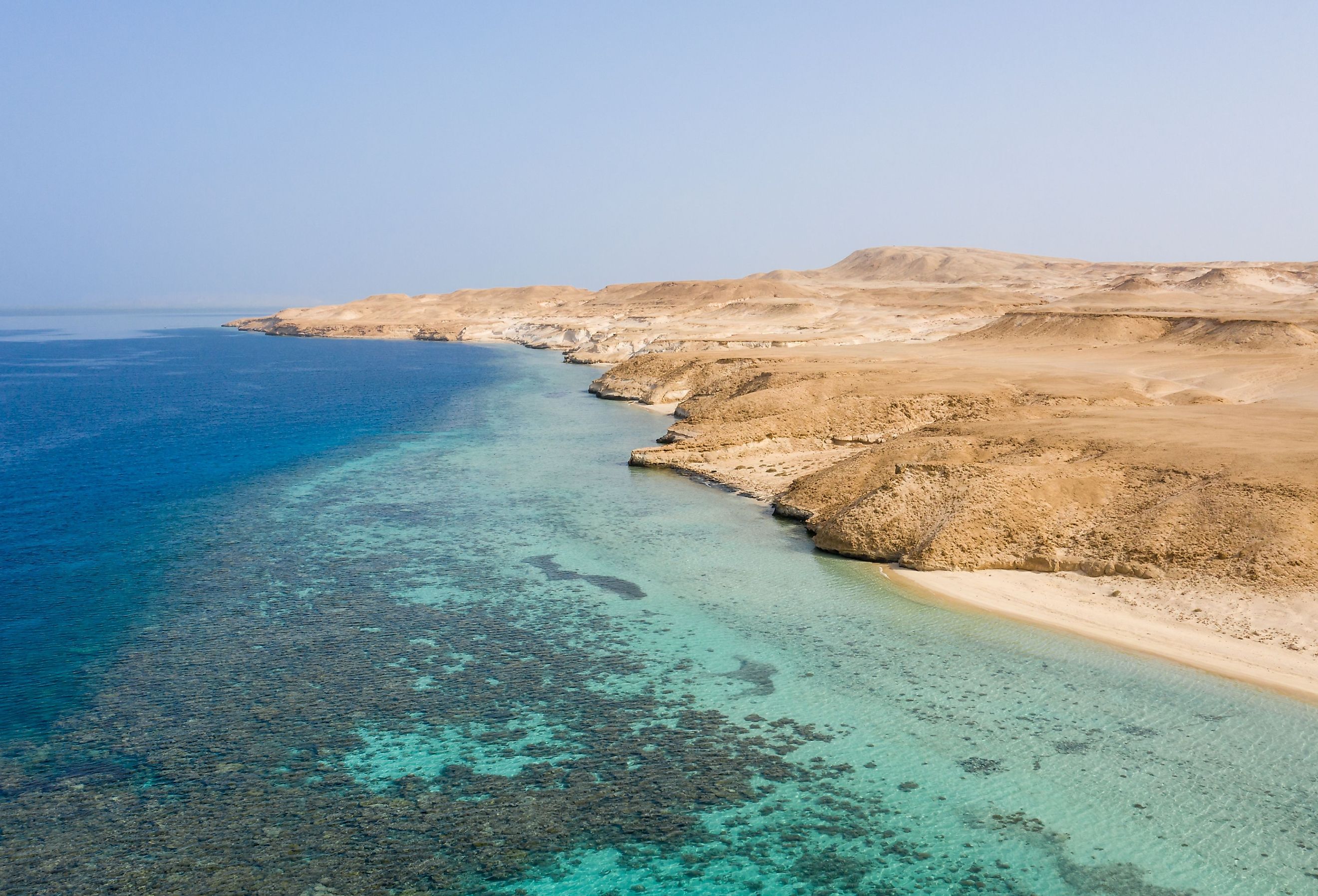
Bay of Tinah
The Bay of Tinah is also known as Jūnah aţ Ţīnah in its native tongue, and Tina Bay colloquially. This particular water body is in Egypt. To its west lies El Mallahah and to the east is Bardawil Lake. These water bodies have protection behind the sandbars that curve inwards and impact the currents. At the Bay's center is an open area, where the water can easily flow. Famous worldwide for its interesting location, it hosts a range of fauna and flora in a well-balanced ecosystem.
Replete with natural wonders and a rich cultural history, Tina Bay is a haven for travelers and researchers alike. It is an ecological wonder, receiving protected status for the bay due to the list of species only found in its waters. The protections allow for the area to continue in health while still promoting research, discovery, and tourism.
Where Is The Bay of Tinah
The Bay of Tina holds its position in the southeastern portion of Egyptian soil. It is close to the border of Sudan, resulting in diverse nomenclature regarding the body of water's name. It resides within the Red Sea, where just to its south is the Hala'ib Triangle. This area is the subject of many territorial disputes between Sudan and Egypt.
Because the bay is relatively isolated, given its sandbar protections and distance from major settlements, it remains unaffected by infrastructure or human settlement. This distance also means that, while the area is in contest, the difficulty of accessing it from land helps preserve its wellness.
Climate Of The Bay of Tinah
The climate at the Bay of Tina mirrors that of the desert interior. Both Egypt and Sudan have hot climates, apparent with extreme temperatures and limited precipitation of any form. Because the bay receives protection from cliffside and mountainous zones, its climate gets the benefits of protection against heavy currents and extreme winds.
Even if the air temperature drops in the region, the water at Tinah Bay remains warm throughout the year. The winds can be overwhelming for new swimmers or sailors, causing tumultuous waters, but the calmer areas provide warm, salty water for sea fans to embrace. This draws many tourists for swimming, diving, and snorkeling amidst these unique waters, giving guides a chance to economize and protect the area.
Flora And Fauna of Tinah Bay
As a relatively undisturbed body of water, Tinah Bay hosts a massive range of water animals. These include invertebrates, fish, and corals. Together with the sea grasses that provide balance to its ecosystem, the bay remains a pristine example of nature's best. One example is the Dugong, a plant-eating water creature, and the guitarfish, two animals whose limited habitats includeTinah Bay.
The land balances the delicate waterscape with its hardy flora, including shrubs, cacti, and succulents. Because visitors and researchers can get close to nature at the Bay of Tina, its flora and fauna are easy to observe and appreciate. An outstanding plant is the Acacia tree, whose thorny presentation is awe-striking.
History And Human Interactions At Tinah Bay
The Bay of Tinah holds many tales of human interactions, dating back millennia. Once used as a port for trade, ancient sailors navigated the Red Sea to exchange goods with civilizations throughout the region. With global development and trade expanding, the bay maintained its value as a port, but its focus shifted to fishing and pearl diving.
These practices peaked during the 20th century, when the trade of these gems was of higher priority than protecting the ecosystem. Most recently, Tinah Bay is a tourist location, with ample economy arising from attractions such as sailing and guided tours. This allows it to maintain its local attraction without depleting the resources of the bay.











